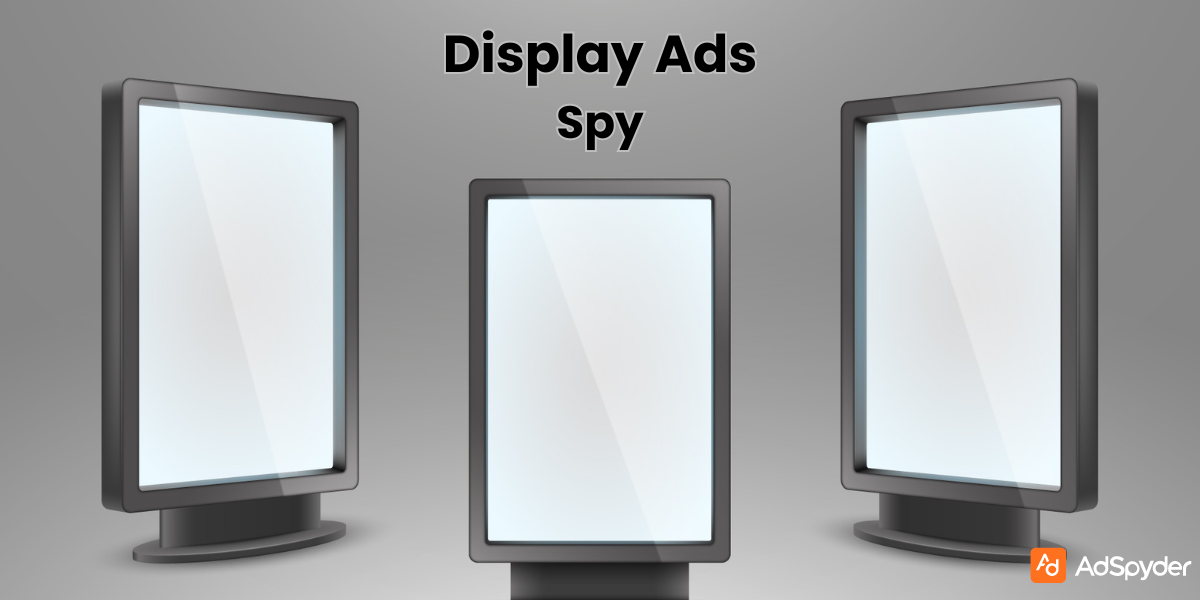Mastering Target Audience Management in YouTube Finding it hard to reach the right people with your YouTube ads? Here’s a fact: targeting your audience well makes your ads work better. This guide shows you how to Optimize Youtube Audience Targeting on YouTube so your ads hit the mark. First, know who you want to talk to. Use YouTube ad targeting options to pinpoint this group. Think about things like what they enjoy and where they spend time online. Next, split your audience into smaller groups with audience segmentation for YouTube ads. This way, you can tailor your message more closely.
The Fundamentals of YouTube Audience Targeting
Targeting your audience on YouTube helps show your ads to people who like your products. This smart move means you spend ad money wisely, making sure it gets seen by the right folks.
Understanding YouTube’s Targeting Options
YouTube ads let you reach various people. You can pick who sees your ad based on things like age, likes, and actions. Choose to pay for views, clicks, or how often your ad is shown.
Knowing your audience makes a strong video ad. Decide who should see it by their age, hobbies, and shopping habits. Then choose where to put your ad and the cost per view or click.
This strategy improves your ad’s success by showing it to those more likely to care.
The Impact of Targeted Ads on Viewer Engagement and Conversion
Targeted ads on YouTube help make viewers more interested and likely to take action. About 59% of people say these ads fit their interests better than TV ads. This happens because the ads focus on what users like and do online, making sure the right people see them.
Showing super relevant messages at just the right time is key to getting good results. This method makes every ad dollar go further, improving how effective spending is, no matter if you’re looking at cost-per-view or cost-per-click.
Ads: A Comprehensive Guide
It’s about being smart with who sees your ad, which greatly increases chances for success.
Since YouTube is the second biggest search engine out there, using its strong targeting tools is a must for advertisers wanting to do well. Now we move on to creating a profile of your ideal audience for your YouTube ads.
Developing a Target Audience Profile for YouTube Ads
To make your YouTube ads work well, focus on people who will like and buy what you offer. This step improves your ad campaign’s results.
Identifying Your Ideal Viewer Demographics
Know your audience to make YouTube ads work better.
- See which age groups might like your product. Young people often go for cool tech, while older ones might want health stuff.
- Check if men or women would prefer your product more.
- Think about if parents will buy your product, especially for their families.
- Look at places where people might need or love what you sell. Use this info in your YouTube ads.
- Find out what languages your customers speak to connect with them through ads.
- Learn how much money people are willing to spend on products like yours. Aim your ads at those who can afford them.
- If your item fits certain jobs or studies, pay attention to people’s education levels.
- Consider if single folks or couples might be more interested in what you’re offering, especially things related to dating or family life.
- Identify hobbies and interests like working out or gadgets. Make ads that these enthusiasts will enjoy.
Pinpointing these details helps shape better marketing strategies on YouTube. You’ll find viewers ready to watch and respond to your ads.
Analyzing Audience Behavior and Preferences
To make your YouTube ads work better, you need to know who you’re talking to.
- Start by figuring out who your audience is. Look at their age, gender, and where they live. This helps shape your ads.
- Check how viewers have interacted with your channel or similar ones before. See what kind of videos they like and how often they watch.
- Do market research to find out what interests your potential viewers on YouTube.
- Use YouTube Analytics to see how people engage with different videos. Check likes, comments, and shares to understand what grabs their interest.
- Group your audience based on what they like watching and how often. You might have groups like “frequent viewers” or “newcomers.”
- Listen carefully to what people say in comments and on social media about your ads or content.
- Try different ad formats with various audience segments to find out which works best for engagement and conversion.
- Keep tweaking your targeting approach using the data you gather on viewer behavior and preferences.
Check out: How Youtube Ads dominate the internet?
Advanced Targeting Strategies in YouTube Advertising
In YouTube advertising, smart targeting lets your ads reach people who really want what you’re selling. This way, your message gets to the right viewers, boosting engagement and interest in your product.
Leveraging YouTube Interest Targeting for Specific Audiences
YouTube interest targeting lets you show your ads to people who like specific topics. If you sell sports gear, target customers interested in sports and fitness. This makes sure your ads reach those likely to respond.
Use YouTube Ads Campaign Manager for this task. It has many interests that match your perfect customer. Choosing the right ones makes your video ads hit the mark. They grab the attention of viewers already interested in what you have.
By focusing on audience engagement, ad targeting becomes sharp and effective. Video content optimization plays a big role here too. With advanced targeting strategies, such as analyzing consumer behavior, marketing strategies get stronger.
Working with influencers also helps reach special audiences fast. Influencer partnerships bring your product closer to potential buyers through trust and credibility.
In all, leveraging YouTube’s data-driven targeting ensures that every ad reaches its intended audience efficiently, benefiting both viewer and marketer alike.
The Role of Remarketing in Reaching Interested Viewers
Remarketing in YouTube ads targets people who have shown interest in what you’re selling. It uses their past actions to make future ads that they are more likely to care about, helping you get more sales. This way, your ads talk directly to people ready to buy, making your ad money go further.
With remarketing, your brand stays in the mind of folks who visited but didn’t buy anything yet. It’s a smart move to win back those almost-customers. Also, by choosing where your ads show up, like in certain places or with certain groups of people, you can speak right to the hearts of potential buyers.
Using techniques like audience segmentation and keyword targeting makes sure your message hits home for each viewer. Ads become even smarter by looking at what people do online and guessing what they might want next. This focused approach saves cash since you’re only showing ads to those most interested.
Adding custom audience options into the mix lets advertisers really zero in on specific groups of viewers based on lots of factors. And when it comes down to grabbing those ready-to-buy-now customers through in-market targeting? Priceless—it turns casual browsers into actual buyers without wasting a dime.
Lastly, getting into demographic targeting means you can shape your YouTube ad campaigns to match up perfectly with the age, gender, interests—whatever makes your ideal customer tick.
Geographic Targeting: Localizing Your YouTube Ads
With geographic targeting, your YouTube ads reach people in certain locations. This ensures locals see your ad, making your advertising campaign more effective.
Benefits of YouTube Ads Location Targeting
- YouTube Ads location targeting shows videos to people in specific places. This works well for businesses aiming to connect with local customers. Imagine a restaurant in Chicago using this feature so only people in Chicago see their ad. This approach makes ad money more effective by reaching the right local audience.
- Through location targeting, businesses understand what appeals to different areas. For instance, a clothing brand might discover that its beachwear ads perform better in coastal cities, while winter gear is favored in colder regions.
- By tapping into these insights, companies can fine-tune their strategies and invest wisely, focusing on successful tactics for each region.
- This method is smart for optimizing ad campaigns and segmenting the audience geographically. It ensures digital marketing efforts are cost-effective and targeted accurately for better online promotion results.
Best Practices for Effective Geotargeting on YouTube
Geotargeting helps advertisers find viewers in certain places. This makes ads more interesting and boosts engagement.
- Pick your target area based on what you sell. Think about where your future customers are.
- Use YouTube’s tools to choose these spots. You can pick countries, cities, or ZIP codes.
- Localized advertising connects your brand with people in a special way.
- Make sure your ads fit the language and culture of the place you’re targeting to better connect with viewers.
- Try out different locations to see where your ads do well. Begin small then grow as you find success.
- Watch how much you spend on geotargeting. Spread out spending for best results.
- Adding things like local landmarks in your ads makes them hit harder.
- Look at YouTube analytics to see how well localized campaigns are doing. Check views, how much people interact, and conversion rates by location.
- Keep making changes based on what the data tells you. Change who you’re targeting and what your ads say when needed.
By focusing YouTube ad campaigns on specific places, advertisers build stronger bonds with their audience and get more from their ad money.
Customizing Content for Target Audiences
Ads need to match what different people want and like. When you make ads that really speak to each group, more people will pay attention and act.
Tailoring Ad Content to Different Viewer Segments
Customize your YouTube ads for different viewers. This makes ads fit better and grab attention.
- Find out who you want to reach. Use details like what they like and buy to make video ads that talk right to them.
- Pick YouTube’s targeting tools. Choose from things like age or what people are interested in, so your ad finds the right eyes.
- Make several versions of your ad. Young folks might like quick, flashy videos, while older ones might enjoy slow, clear messages.
- Think about where people will watch—phone or computer? On phones, make your ads short and snappy.
- Check how well each version does regularly. Change things up based on which gets more views or clicks from each group.
- Tailor your call-to-action for every group. What works for a teen might not be right for an adult at work.
- Use YouTube’s ad layouts wisely. Short ads may keep young watchers happy since they can skip if they want; longer story-driven ones can catch others’ attention fast.
- Add stories that speak to what each audience cares about. This makes your ad stick in their mind.
- Try sponsored cards or pop-up ads for products that match what certain viewers are into.
- Always update how you advertise by watching trends and new rules on YouTube to stay relevant.
Each step helps craft messages that click with various audiences on Youtube, boosting interaction with your brand and making campaigns soar.
Creating Relevant and Engaging Ads for Targeted Groups
To grab attention, ads must speak to what viewers like. Knowing your audience’s age, gender, location, and interests is key.
- Start your ad with something catchy to pull viewers in fast.
- Your message needs to be clear so people get what you offer right away.
- Use a story in your ad that viewers can see themselves in; it makes your ad stick better.
- Make sure ads look good on phones—most YouTube watchers use their mobiles.
- Have a clear call-to-action; tell viewers exactly what you want them to do next.
- Good lighting, sound, and editing matter to keep folks watching.
- Break up your audience by what they do and like for messages that feel more personal.
- Try out different ad versions to find out which one works best with different groups of people.
- Keep checking how well your ads are doing and adjust based on what the data tells you.
- Update content often so it stays interesting according to trends or season changes important to your audience.
- When possible, respond to comments on ads—it builds community around your brand.
By following these steps closely, the content connects with the right individuals deeply while encouraging higher engagement leading directly toward better results.
Utilizing YouTube’s Demographic Targeting Features
YouTube’s Demographic Targeting feature allows you to target ads by age, gender, and parental status. This fine-tunes your campaign for better results.
Reaching Specific Age Groups, Genders, and Parental Statuses
YouTube lets advertisers target ads by age, gender, and whether viewers have kids. This helps ads get to the right people, making them more likely to work well. You can use YouTube Ads Campaign Manager to find these groups easily.
Choosing keywords that match your audience and working with influencers who attract them makes ads even stronger. “Target smartly by understanding who your viewer is.”
You can change your ads based on what works, keeping them interesting and relevant. Also, paying attention to what users like and do adds another way to make sure you’re reaching the right customers.
Adjusting Strategies Based on Demographic Performance
Adjusting strategies based on demographic performance is smart for YouTube ads. This makes sure you’re talking to the right people, like different age groups, genders, and whether or not they have kids.
- Look at your ad data to find out which age groups are tuning in the most. You might need to create more videos that appeal to them.
- Check if more men or women are watching. Use this info to make ads that catch their interest.
- Find out if parents are watching your ads differently than non-parents and change your ads to fit what they like.
- Change who sees your ad by using tools for targeting interests and past behavior. This helps get your message to the right audience.
- Watch how different types of viewers react over time. Trends can change, so be ready to update how you target audiences.
- Track how new targeting affects engagement and sales conversions. Ads that hit the mark usually do better.
- Try different messages and visuals that could attract specific parts of your target audience even more.
- Keep checking who engages more with what kind of content – men or women? Tailor content as needed for better results.
- Change where you show your ads based on which locations show more interest from various demographics. This keeps it relevant locally.
- Listen to what people from these targeted groups say in comments or messages for extra clues on adjusting tactics.
- Fine-tune how you segment viewers within YouTube’s advertising options for sharper reach among wanted demographics.
Each step helps advertisers fine-tune their campaigns on YouTube, making sure they connect well with viewers’ backgrounds, behaviors, and likes.
Behavioral Targeting on YouTube
YouTube ads use behavioral targeting. This method looks at what users like and watch to show better ads and get more people interested.
Targeting Based on User Interests and Viewing History
Ads that match user interests and past views reach people more likely to watch your content. This method picks up on what users have liked or watched before. So, your ads appear to viewers who enjoy similar things.
- Your ads directly connect with those interested, raising the chances they will watch and engage.
- By looking at what users have done in the past, advertisers can shape their messages to feel personal for each viewer. This strategy boosts user engagement by linking with preferences viewers already have, making them more receptive to your offers.
- Using keywords and insights about behavior helps fine-tune ad placement. It makes sure your video marketing efforts hit the mark with audience targeting. This approach also aids in optimizing ad performance, ensuring better results from your advertising spend.
- Influencer marketing becomes more effective when you know your audience’s likes and habits. Partnering with influencers who share similar interests with your target audience can amplify engagement and boost consumer behavior towards your brand.
- A strong content strategy that leverages behavioral targeting ensures higher video ad performance. By tailoring content to fit viewer interests and behaviors, brands create a closer connection with their audience – leading to increased interest and interaction with the advertised products or services.
Enhancing Ad Relevance Through Behavioral Insights
Behavioral targeting on YouTube shows ads to people based on their actions. This makes ads fit what viewers like. By checking what videos someone watches or searches for, you can pick the best ad for them. This way, every viewer gets an ad that interests them.
By looking at how users act, we make ads that really speak to different groups of people. With behavioral data, advertisers get better at picking who sees their ads over time. They find out which content pulls in certain viewers and change their ads to keep up. This keeps ads fresh and interesting for all kinds of YouTube watchers.
Measuring and Optimizing Target Audience Management
To boost your YouTube ads, track key metrics. This sharpens your ad creation and connects better with your audience.
Key Metrics to Assess the Effectiveness of Targeted YouTube Ads
Tracking your YouTube ad success shows if you’re hitting the mark with your audience and getting them to act. Here’s what to keep an eye on:
- View rate tells you how often people watch your ad when it pops up. It shows if your ad grabs attention.
- Click-through rate (CTR) counts viewer clicks on your ad. A high CTR means your ad draws people in.
- Conversion rate looks at clicks that lead to actions, like purchases or sign-ups. This metric indicates if your ad is working.
- Cost per view (CPV) helps you figure out spending by showing the price for each ad view.
- Cost per click (CPC) helps with budgeting by revealing the cost of each click on your ad.
- Watch time measures the duration viewers stay tuned into your ad. Longer times mean more captivating content.
- Engagement rate tracks likes, shares, and comments to show viewer interaction with ads.
- Videos saved and shared notes how often ads are saved or forwarded, hinting at quality content.
- Audience retention rate gauges average video watch length, shining a light on how much interest viewers have.
- Impressions count the number of times an ad appears, indicating its overall reach.
These metrics sharpen insights into audience response and enhance strategies for better YouTube advertising outcomes.
Continuously Refining Audience Targeting Strategies
To make your ads hit the mark, keep refining how you target audiences. It means always using data to better your ad outcomes.
- Set clear goals for your YouTube ads – aim for more clicks, views, or actions.
- Track important info with YouTube’s analytics tools; look at views, impressions, click rates, watch times, and actions taken.
- Use Google Ads to track how people react after seeing your ads and visiting your site.
- Study audience habits to spot trends that could guide who you target next.
- Break down your audience by age, gender, and if they have kids. This makes ads feel more personal.
- Focus on what users did before – like their past interactions with similar content – to decide who sees your ads.
- Always check if you’re spending money wisely by looking at campaign results and budget used.
- Change how much you bid based on ad outcomes to spend smarter and get more back from what you put in.
- First try out different groups with a little money. Then use more cash on what works well.
- Keep updating who you target using fresh insights from YouTube analytics and other tools.
By avoiding common mistakes, these steps can really sharpen how effectively you reach people.
Navigating Challenges in YouTube Audience Targeting
Winning at YouTube ad targeting means adapting fast to new rules and what viewers like. Stay on top in this game by changing your plans when needed.
Addressing Common Pitfalls and Overcoming Obstacles
To get your ads to the right YouTube audience, focus on who they are and their interests.
- Find out who you want to reach. Think about their age, what they like, and what they buy.
- Make your ad grab attention fast. It should speak directly to the people you’re aiming at.
- Remember, many watch YouTube on phones. Make sure your ads look good there too.
- Your ad should have a clear message that tells viewers exactly what to do next.
- Use YouTube Ads Campaign Manager for better control over your campaigns. It helps you see how well your ads are doing.
- Choose keywords related to what you’re selling so interested viewers can find you easily.
- Try remarketing strategies to bring back people who’ve seen your stuff but didn’t buy anything yet.
- Working with influencers can help spread your message further because they’re trusted by their followers.
- Always test and tweak based on data from YouTube Analytics for smarter strategy shifts.
Costs matter too—watch how much you spend versus how targeted and effective your ads are.
By keeping these points in mind, moving through common challenges in targeting audiences on YouTube becomes smoother while ensuring strong results from advertising efforts.
Staying Updated with YouTube’s Evolving Advertising Policies
YouTube updates its advertising rules often. Marketers need to stay updated with these changes. They must follow YouTube’s content guidelines and community standards for their ads. Regularly check YouTube’s official updates and use their tools for advertisers to keep your ads running well.
Adjusting strategies is crucial because of policy changes. You might need to change your audience targeting or the type of content you advertise. This process helps make sure your ads work well and you spend your budget wisely.
Overcoming challenges in YouTube advertising means staying smart about how you target audiences. With good management, your ad strategies will keep getting better, even as rules change. Keep refining how you target people on YouTube to stay ahead.
Conclusion
Getting good at managing your target audience for YouTube ads is all about using the right tools and data. You want to make ads that catch people’s eyes, keep them interested, and get them to buy from you. As you get better at this, your ad campaigns will improve too. Always test and change things up to see what works best.



